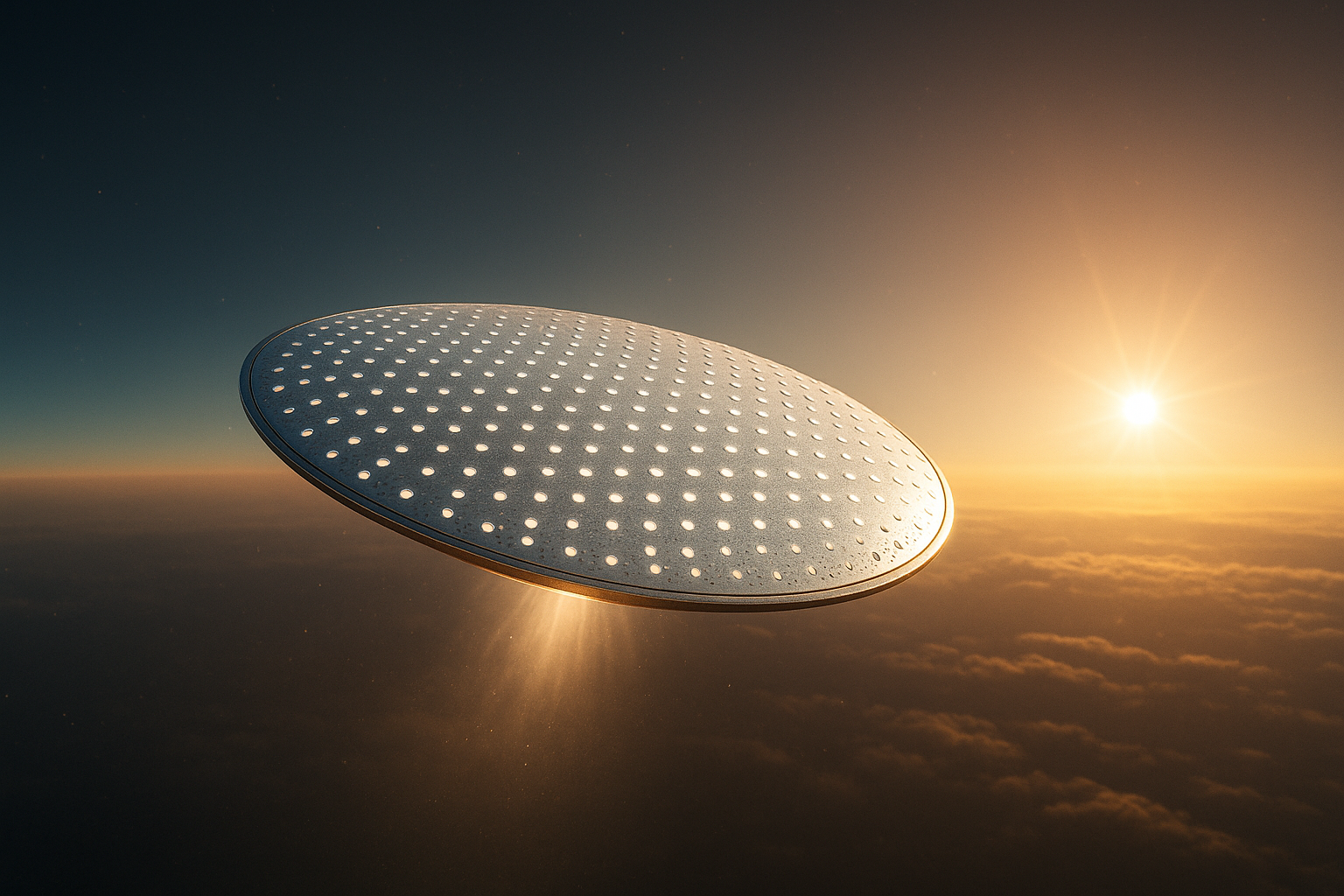
Solar-Powered Levitating Devices Could Explore the Edge of Space
Solar-powered levitating devices are opening new possibilities for exploring the mesosphere, the layer of the atmosphere between 50 and 100 km above Earth. A Harvard University team led by physicist Ben Schafer has developed an ultralight wafer that lifts using only the Sun’s heat. The breakthrough could pave the way for swarms of tiny, power-free flying platforms to study atmospheric conditions and even other planets.
Harnessing a 19th-Century Physics Phenomenon
The team’s concept builds on the Crookes radiometer, a classic 19th-century device that spins under light in a low-pressure chamber. Schafer’s group used nanofabrication to create a two-layer aluminium oxide wafer, about 1,000 times thinner than a human hair. The transparent top layer allows sunlight to pass through, while the chromium-coated bottom layer absorbs heat.
Gas molecules hitting the heated underside gain extra momentum and push the wafer upward. This lift occurs naturally in mesosphere conditions, without any moving parts.
A Perforated Design for Better Lift
The wafer’s perforated structure allows gas molecules to move between layers, generating a rotor-like effect. This approach is simpler and more efficient than earlier hollow-tube designs. In testing, Schafer’s device required 45% less energy than the Sun provides in the mesosphere, outperforming previous attempts.
Potential for Mesosphere and Planetary Exploration
The mesosphere is often called the “ignorosphere” because it is too high for planes and balloons, yet too low for satellites. Solar-powered levitating devices could monitor this region continuously, collecting valuable climate and weather data. They could also operate in the Martian atmosphere, where sunlight-driven lift is possible.
Scaling Up for Practical Use
Schafer’s team designed a six-centimetre saucer that could fly at 75 km altitude with a 10-mg payload, enough to carry microelectronics for sensing and communication. It could remain airborne indefinitely in summer at high latitudes or during daytime closer to the equator. Schafer’s start-up, Rarefied Technologies, aims to commercialize the concept for high-altitude weather monitoring.
Other researchers are exploring larger “jet balloon” concepts up to 10 metres wide, that could carry 1 kg at 80 km altitude. While challenges remain, these advances make atmospheric flight in the mesosphere more realistic than ever.
Read: Scientists Reproduce Legendary Golden Textile Using Clam Waste






